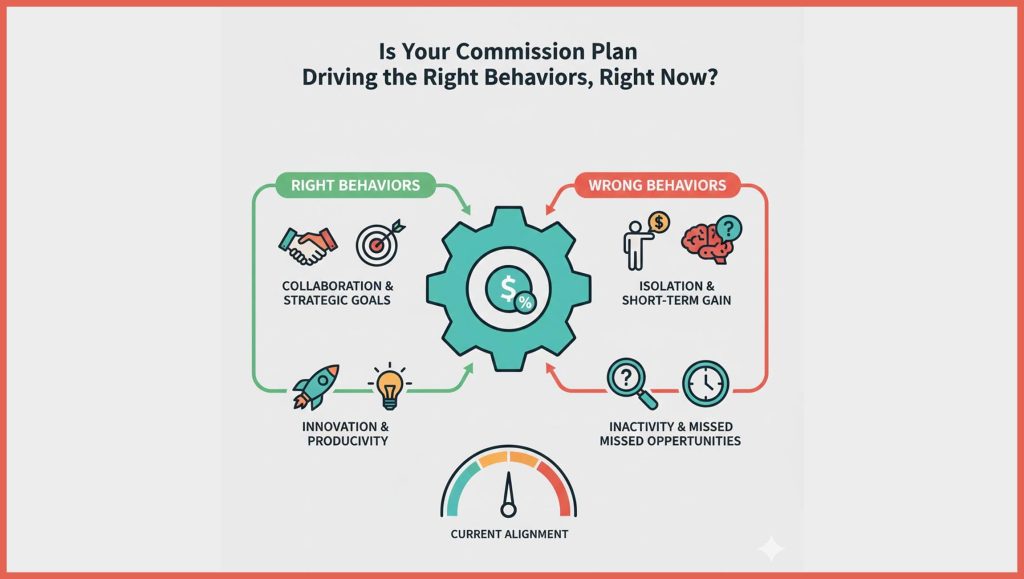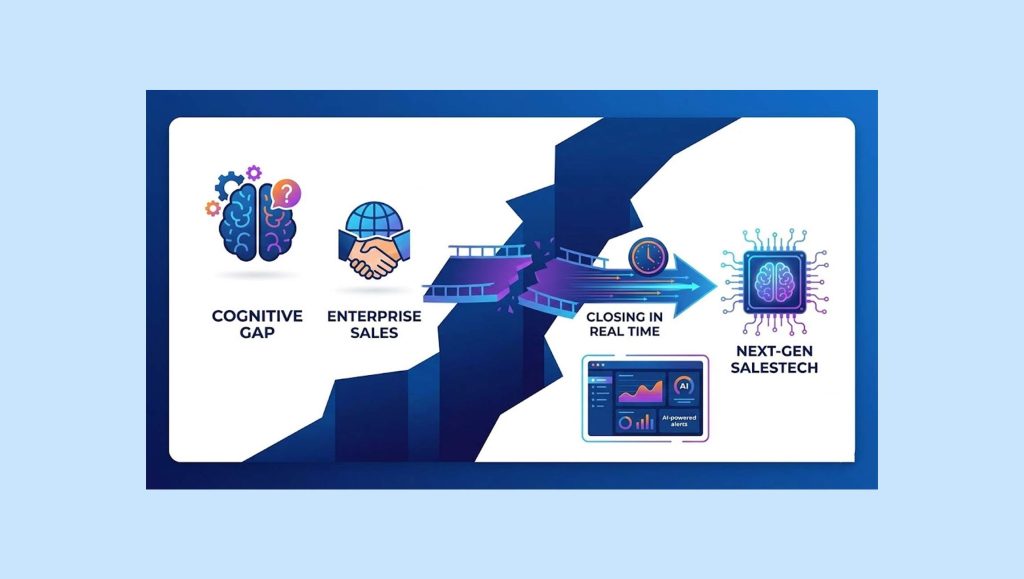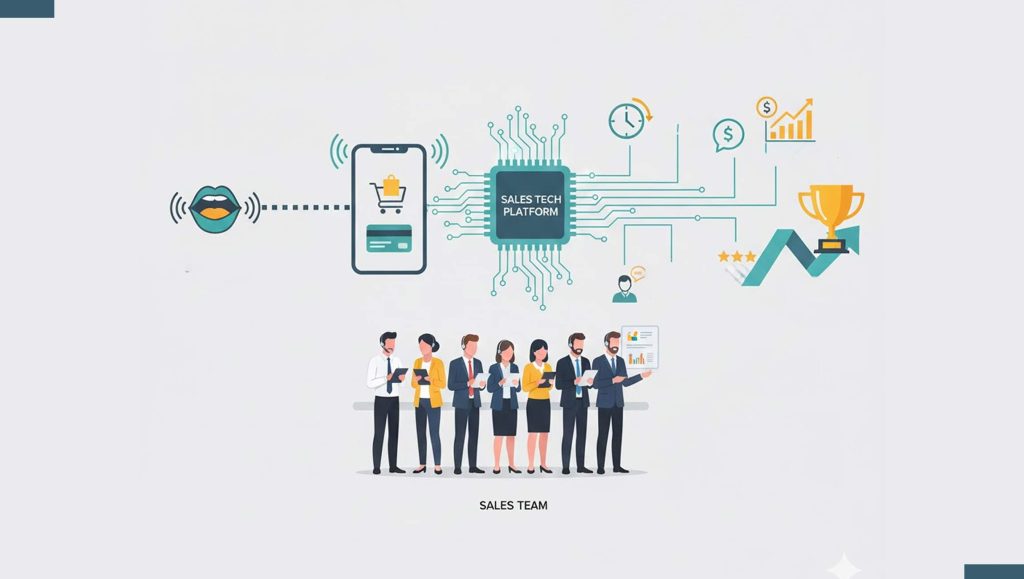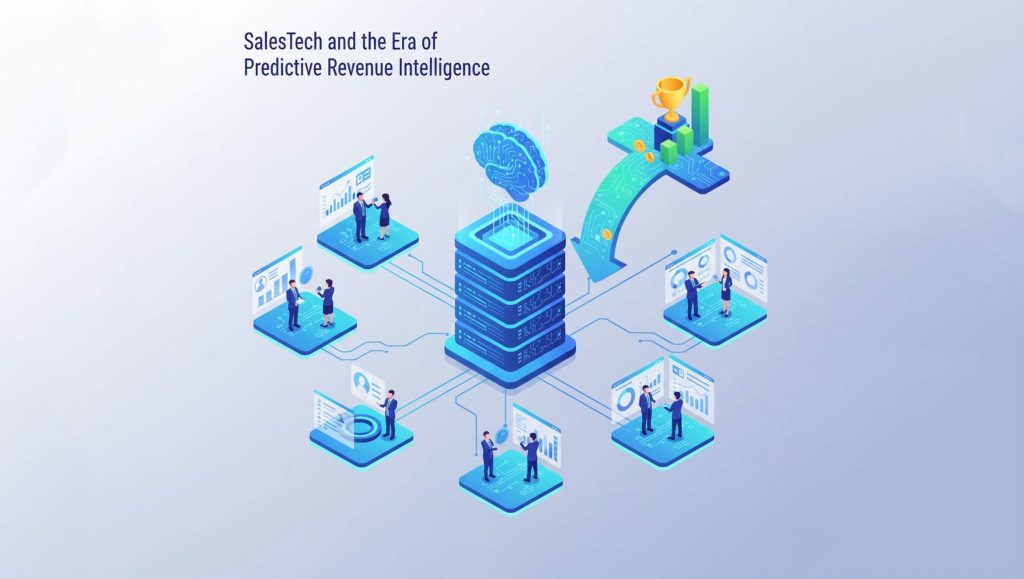The business landscape is highly competitive and many SMBs (Small and Medium Businesses) are constantly implementing new strategies to boost their marketing and sales efforts. Another strategy gaining popularity now is the reporting of call information to their services. Call analytics, which is the term for analyzing customer feedback collected from phone calls, is critical for SMBs as it offers a look into understanding customers and prospects better.
We will see what is call analytics and how it can help SMBs improve their marketing and sales. We will also delve deep into AI-driven solutions for call analytics as that’s the new norm of the industry including AI in every possible thing so the results can be optimized and benefits can be more. It is also a time-saving solution. Therefore, industries and businesses are making use of AI.
Understanding Call Analytics
Call Analytics is an ideal way to measure, collect analyze, and report call data. The insights that are derived from call analytics are very useful for the customer support and sales team and can be used to derive insights from call analysis it further helps the marketers to optimize their campaigns and call-handling techniques and it is just the tip of the iceberg.
The basic reason to implement call analytics is to gain actionable insights that help the customer service representative or the sales reps to Improve the measurement, administration, and analysis of the call performance. It is the main goal of putting call analytics into practice. The call analytics insights are useful for maximizing your ROI (return on investment) as well.
Today, this can be easily achieved because of incredible advances in technology. Moreover, there are many types of call analytics software available today that include conversation content data.
It helps in identifying which callers can be the potential leads and you can understand which types of services or products, the leads are interested in. Which product needs more improvement and finally the leads can be converted into customers.
With these useful insights, you can make many decisions and understand the following:
- Find problems that are adversely affecting your conversion rates
- Make wiser financial decisions for your campaigns.
- Show advertisements to each caller based on the topics of their conversations.
- Generate a lot of leads at a reduced cost per lead (CPL)
Importance of Call Analytics in SMB Marketing and Sales Strategies:
Call analytics are of great importance for SMBs that often make phone calls to people to sell their services or products. The primary sales and marketing channel helps in providing a deep insight into customers’ experience over the phone. In the constantly evolving digital world, telephone conversations have always been, and remain an important connection between businesses and their customers, being a direct communication line for customer inquiries, sales inquiries, and support problems.
Call analytics offer SMBs an arsenal of customer information on consumer behavior and taste. Analyzing the data such as call duration, call source, and caller details SMBs can see the patterns and trends of customers in phone call interactions.
This kind of information streamlines the marketing and sales activities in such a way that it can be directed to the target audience well and meet the required tastes and preferences of the market. Not only this, call analytics data can show how well the ad campaigns are doing, the quality of calls made into the business, and which areas of customer service need to be improved.
Significance of AI-Driven Solutions in Enhancing Call Analytics Effectiveness:
The importance of AI-based solutions in improving the efficacy of call analytics cannot be denied. Artificial intelligence (AI) algorithm tools can detect volumes of call data easily and faster, especially the details that may have been overlooked in a hand-worked report. The AI-supported solutions can furnish smart abilities like sentimental analysis, speech recognition, and forecasting, giving SMBs a convenient way to exploit information from phone calls into powerful actionable insights.
Also, AI programs can do repetitive tasks like call segmentation and lead scoring, which gives more time for the announcements of business owners to focus on strategic options. As AI-driven analytics of SMB reality can cultivate better knowledge of your clients, enhance the efficacy of marketing and sales activities, and in general, boost SMB business growth, there is a chance to boost business for SMBs.
The call tracking data becomes a key tool for SMB marketing and sales strategies and directs them to where the customer is, what he or she prefers, and why he or she selected a certain company over others. The great bet that AI-based tools make in this process boosts the efficiency of call analytics, by allowing SMBs to make more practical decisions on their call data faster and bring growth to their business.
Understanding The Role Of Call Analytics In SMB Marketing And Sales Efforts
In addition, call analytics is an essential element of sales process improvement in SMBs. Sales calls are SMBs’ time-worthy channel of interaction with prospects, where the business’ representatives can capture the audience’s need and leverage it to land new deals. Through call analysis resulting in an understanding of call duration, call outcome, and caller demographics, SMBs can now avail of information concerning the efficiency of their sales processes and sources of lagging.
Take for example SMBs, they can monitor key performance indicators (KPIs) such as average call duration and call conversion rate to figure out the best sales pitch and identify gaps for training and coaching. Moreover, several call data can also show obstacles and bottlenecks that are regularly brought up by your callers hence allowing you to revise pitches and messaging in sales so that the customer-entitled needs are met.
Concurrently, the call analytics tool not only facilitates tracking of campaign effectiveness and sales process optimization but also helps in providing top-notch customer service in SMBs. For small and medium business entities, customer service calls provide a chance to connect, clear customers’ concerns and problems, and handle issues, in a fast and effective manner.
The company will use details of calls that have been recorded and sent across for transcription to identify what majority of customers call to inquire, complain or share their feedback. Such insights would help identify common issues, if any, that necessitate improvement.
Likewise, businesses can derive customer satisfaction scores and recurring issues or concerns by employing call analytics and then devise measures to address the matters promptly. This will implicate the growth of customer service call quality resulting in customer contentment, retention, and at the end of the day, more business.
Benefits Of Call Analytics For SMBs
Call analytics is undoubtedly the one and only, data source, that should be embraced by marketers who desire to have the best strategies and smooth interaction with the customers.
Businesses can draw a lot of valuable insights from the data collected from the phone calls, which they can use to maximize their marketing ROI by reducing costs and optimizing marketing campaigns, improving the quality of customer interaction and calls, to enable better decision-making, optimizing their call performance, to gain sales and lead generation insights, and to enjoy a competitive edge.
-
Improved Marketing ROI:
One of the main advantages of call analytics is the fact that it can be used to assess the efficiency of marketing campaigns and communications sources. Through this mechanism, businesses monitor and evaluate call data and identify which kind of marketing efforts helps in getting more sales inquiries. Thus, they have an opportunity to re-allot their marketing budget and improve their ROI. There are several examples of how big data analytics can benefit a business.
For instance, if a company observes that the volume of inbound calls rises many folds after a specific digital ad campaign, it can decide to put more funds into that particular campaign to further amplify its effects. Moreover, call analytics provides businesses an opportunity to discover those campaigns or channels that are undermining their marketing efforts and costing more to generate sales. Therefore, they can reprioritize their resources and narrow down the marketing plan to the most profitable campaigns.
-
Enhanced Customer Experience
A major advantage of call analytics is that it is good at enhancing the level of the customer experience. Through the process of listening to call recordings and transcripts, companies can come up with outstanding information regarding customers’ pain points, common queries/concerns, and areas where the channel used for handling calls is not that effective.
Armed with this data, companies can make certain improvements so various customer service issues can be resolved. The data is useful for training the customer support staff who have to take calls and build better strategies for tackling the most common issues. Hence, the effect is having a higher customer experience as well as customer satisfaction and retention.
-
Data-Driven Decision Making
Incoming call impedance offers businesses impactful call information and analytics details that enable them to relate with data in comparison to mere guesswork. Through studying the calls, businesses for instance, can collect information related to customers’ needs, choices, and patterns to help seize up the sales and marketing strategies, the call center’s operation, and the customer service.
For example, if a company detects a trend of more calls that are incoming at a specific time of day, then the company may modify the staffing schedule in a way that there will be enough agents finally available at the same time to tackle the increased call volumes. Just the same tuning, the businesses will establish the issue or complaint that recurs among callers, initiating proactive steps to address the problem and also any possible future issue to improve customer satisfaction.
-
Call Performance Optimization
Call analytics statistics help businesses to track and analyze the most important call performance indicators comprising call duration, call drop, and call conversion. Statistics tracking gives an opportunity to spot and improve less successful areas and implement elements to provide better customer experience and turn calls into a sale.
For instance, when a business marks a significant rate of call abandonment, the issue responsible can be investigated such as long wait times or rambling IVR menu, and the mitigation action taken. On the other hand, if a business notices its own low call conversion rate, it will likely start an investigation into the explanation behind that and look for ways to improve its sales scripts, train its agents more efficiently, or make its offer better by meeting the client’s needs more accurately.
-
Sales and Lead Generation Insights:
Call analytics gives businesses information about the efficiency of their sales as well as lead generation. Through tracking and analyzing calls that are coming into a business an owner can easily trace back high-quality leads, discover marketing approaches that have given good results, and find areas for training and improving the sales team.
Let’s consider this example: A business may find that its top sales rep is shining in closing deals on the inbound calls. This call can be studied in detail to identify the approaches and tactics that are used by the top sales rep that can be effectively shared and further trained to the whole sales team. Similarly, if companies find out that a given marketing campaign is generating very unqualified leads, they can modify their targeting criteria and their messaging to attract more suitable leads.
-
Competitive Advantage:
By using call analytics, companies can harness a competitive advantage by knowing all the customer’s details and demonstrating the superiority of their products in comparison to their competitors.
A business uses call data analytics which lets the business identify what it trends what its patterns are and insights that enable the company to give the products, services, and marketing campaigns that are made especially for their customers’ demands.
Such as, if a business identifies that a particular group of potential customers is usually more likely to call about a specific feature in particular products, they will use this data to either design special marketing campaigns that are tailored to meet customer needs or improve the product to make it relevant to such communities.
Call analytics provides an opportunity to gain a clear vision and understanding of their customers. By doing this, businesses will differentiate their products and position themselves as leaders in their markets.
SMBs looking to improve customer interactions and planning to optimize marketing efforts can benefit greatly from call analytics. Call analytics gives organizations the tools they need to thrive in today’s cutthroat market, from boosting customer experience and marketing ROI to facilitating data-driven decision-making and yielding insightful sales data. Effective use of call analytics can provide companies a competitive edge, spur expansion, and lead to long-term success.
The Importance of Call Analytics in Marketing Optimization
There are numerous similarities between call and web analytics. Both gather, quantify, and evaluate information on who got in touch with you, what they are looking for, and even why they chose to utilize this particular channel. The difference between the two is that digital data is easier to interpret than recordings. Call analytics become enterprise-level costly as a result. That has changed, and companies of all sizes can now consider them.
According to Amber Callan, COO of Agile & Co., a small inbound marketing business in St. Louis, call analytics is crucial for enhancing marketing, generating sales leads, and demonstrating return on investment.
If you’re not tracking calls, Callan estimates that you might be losing out on as much as 50% of your leads. For some of my customers, phone calls account for about 90% of their leads. For many years, the 13-year-old company has been employing a call analytics tool. According to Callan, the information it offers enables them to see the whole scope of all of their marketing initiatives. It accomplishes this by tracking the efficacy of marketing efforts and displaying to you the phone call-generating channels and keywords that provide the highest volume of leads.
Examples Illustrating How Smbs Have Leveraged Call Analytics To Achieve Business Growth And Success
SMBs have been able to leverage call analytics to achieve business growth and success in several ways. We will study deeply about these companies what difficulties or challenges they faced what solutions they got from call analytics and finally, what were the results when they decided to implement the solutions that they planned based on these call analytics insights.
1. Coffman Engineers
- Difficulties: Coffman Engineers faced challenges with traditional telephone services, including high costs and lack of flexibility in emergencies. Additionally, managing multiple communication channels proved cumbersome.
- Solution from Call Analytics: By adopting a virtual phone number linked to a cloud phone, Coffman Engineers leveraged call analytics to optimize their communication strategy. This included identifying cost-effective solutions and integrating a catastrophe recovery option.
- Results: Despite initially incurring 50% more costs per employee, the overall savings of 25% compared to plain old telephone service (POTS) were achieved. Moreover, the cloud phone system streamlined communication processes, offering all necessary functions within a single subscription plan. This consolidation improved efficiency and preparedness, ensuring seamless contact with staff during emergencies.
2. Spear Education: BI Streamlines Internal Processes and Workflow
- Difficulties: Spear’s phone system was devoid of features that would have allowed its customer care representatives to operate more effectively and deliver superior customer service. For instance, its phone system was not linked to a customer relationship management (CRM) application, nor did it record calls.
- Solution: After conducting a thorough investigation, Spear linked its BI solution with its contact center software in order to offer a comprehensive perspective of customer interactions and keep more detailed records of client interactions.
- Results: Spear saved 35 hours of weekly representative time and improved agent efficiency after introducing a new solution for their contact center. Now, Spear’s representatives put that time back into making 4,000 more outgoing calls each week.
3. An online boutique, “Belle & Bloom Boutique,” specializing in women’s fashion and accessories.
- Challenge: Belle & Bloom Boutique wanted to improve customer engagement and sales conversion rates on their website. They were receiving a high volume of website traffic but struggled to understand why some visitors were not completing purchases.
- Solution: Implementing call tracking software integrated with their e-commerce platform, Belle & Bloom Boutique tracked phone calls generated from their website. They analyzed call recordings and call data to identify common customer inquiries, objections, and pain points during the purchasing process.
- Outcome: Leveraging call analytics, Belle & Bloom Boutique identified common customer concerns related to sizing, shipping times, and product availability. They optimized their website content and product pages to address these concerns proactively, providing detailed sizing guides, prominent shipping information, and real-time inventory updates. They saw better customer satisfaction scores and a 20% rise in online sales conversion rates as a result.
Read More: SalesTechStar Interview with Viviane Campos, Global Head of Sales at Connectly.ai
Key Features and Capabilities of AI-Driven Call Analytics Solutions
Call analysis is being revolutionized by artificial intelligence (AI), which makes it possible for companies to analyze incoming and outgoing calls more accurately and efficiently than ever. In this news release, we’ll examine how artificial intelligence (AI) is changing call analysis and showcase the salient characteristics and advantages of Call Cabinet, a top platform for call analytics driven by AI.
Artificial intelligence (AI) can assess the nuances of every call and provide insightful information that may be used to improve operations. Numerous organizations have acknowledged that the effectiveness of AI-driven voice analytics has increased customer happiness while also increasing the performance of agents and supervisors. AI may also help find areas where costs can be cut, compliance can be strengthened, and even fraudulent activity can be detected.
With human capability unable to comprehend such massive amounts of data, artificial intelligence (AI) becomes an essential tool for organizations and call centers handling thousands or tens of thousands of calls per day to obtain a thorough grasp of operations.
A. Explanation of AI-driven call analytics solutions and their advanced features
AI-driven call analytics solutions and their advanced features are highly exemplary for SMBs to understand the drawbacks and take corrective actions to enhance the performance of employees, improve ROI, and get more sales or conversions. Let’s look at these features and the advantages they offer to SMBs.
1. Voice analysis driven by AI
AI-driven voice analytics makes use of AI’s ability to convert call specifics into useful information for bettering operations. Supervisors and agents can boost client satisfaction and their performance with its help. AI is a crucial tool for handling high call volumes since it can also spot fraud, enhance compliance, and provide cost-saving options.
2. Call analysis powered by AI
Businesses can benefit from several advantages when using AI-powered call analysis, which can transform customer interactions and improve operational efficiency. The possibility of increased sales performance through the identification of effective techniques is one important advantage. Businesses can customize their sales strategies for optimal efficacy and improved conversion rates by utilizing AI-driven call analysis, which gives them important information about consumer preferences and successful sales tactics.
Additionally, call and speech analysis automation saves firms money and effort. AI algorithms can swiftly scan enormous volumes of call data, discovering important trends, patterns, and areas for improvement, in place of humans evaluating every conversation. Because of this automation, the analytical process is streamlined and organizations can concentrate their resources on putting practical insights into practice rather than on tedious tasks of data processing.
Artificial intelligence (AI) algorithms can produce customized recommendations and solutions based on the analysis of consumer interactions and preferences. This allows for an improved overall customer experience, increased customer happiness, and loyalty.
Businesses that use AI-driven call analysis might anticipate several advantages:
- Improved sales performance through the identification of efficient strategies
- Automated call and voice analysis saves time and money
- Personalized customer service through customized recommendations
- Call volume reduction with AI-powered self-service options
- Enhanced compliance monitoring to satisfy regulatory requirements and Targeted training improves agent and supervisor performance
- Enterprise-grade cloud-based call recording
- AI call recording platform offers a comprehensive cloud-based solution for call recording. It ensures compliance, provides universal storage options, and captures calls securely on cellular networks.
3. Comprehensive screen recording
AI makes it possible to record screen activity, audio, metadata, and customer and agent interactions. This tool makes it easier to identify process bottlenecks, create best practices, and monitor performance.
Businesses now have a flexible way to record and examine different facets of customer and agent interactions thanks to AI-powered comprehensive screen recording. AI-driven screen recording, in contrast to conventional screen recording techniques, captures not just what’s visible on the screen but also audio, metadata, and customer-agent interactions, giving a complete picture of the full contact process.
The capacity of thorough screen recording to make it easier to identify process bottlenecks in corporate operations is one of its main benefits. AI-driven screen recording helps firms identify inefficiencies and areas for process improvement by capturing screen activity, audio interactions, and information like timestamps and user inputs.
For instance, companies can improve overall productivity and streamline operations by identifying customer journey stages when delays or hurdles are encountered by customers by analyzing screen recordings.
Comprehensive screen recording is also a useful tool for developing best practices in businesses. Businesses can uncover and codify best practices that result in positive outcomes by collecting and documenting successful interactions between consumers and agents. The firm as a whole can then spread these best practices, giving staff members direction and uniformity while also promoting consistency in customer service delivery.
Comprehensive screen recording also makes it easier to monitor and assess individual and team performance. Businesses may evaluate agent performance, pinpoint areas in need of training and development, and identify top performers by examining screen recordings and interactions. Businesses can increase customer satisfaction and business outcomes by using this data-driven approach to performance management to determine resource allocation, training efforts, and incentive programs.
4. Speech recognition that leads the industry
Speech recognition and natural language processing engines driven by AI provide transcriptions that are 10% more accurate than those produced by traditional voice recording systems. The capacity to transcribe helps to enhance sales, customer service, compliance, and quality control.
AI-driven speech recognition ensures that all interactions are accurately recorded and evaluated for regulatory compliance and quality assurance reasons, which is important in terms of compliance and quality control. The transcriptions produced by AI-powered systems function as trustworthy records of communication, assisting companies in making sure they follow industry rules and guidelines and uphold the greatest standards of quality in their dealings with clients and customers.
Moreover, AI-powered voice recognition systems’ improved transcription accuracy allows companies to extract more analytical and insightful information from their communication data. Businesses can find useful trends, patterns, and chances for improvement across a range of operational areas by accurately transcribing and analyzing conversations. This leads to improved decision-making and business outcomes.
All things considered, AI-powered voice recognition technology is at the forefront of the field, providing unmatched efficiency and accuracy in conversation transcription. In addition to improving quality control, compliance, sales, and customer service, this feature helps companies mine their communication data for insightful analytics that promote success and ongoing development.
5. Sentiment analysis for client interactions
Sentiment analysis for client interactions is the practice of evaluating the emotional tone and context of phone calls between businesses and their clients using artificial intelligence (AI)-driven voice analytics.
Businesses can learn a great deal about their consumers’ sentiments and emotional states by examining the language, tone, and facial expressions utilized in these exchanges. Businesses can gain a better understanding of consumer interactions by using AI-driven voice analytics to identify sentiment and emotional context in phone conversations.
Businesses can modify their products, services, and customer support methods to better suit the demands of their customers by analyzing the mood of phone calls to uncover patterns and trends in consumer feedback. For example, firms might take proactive measures to address issues and enhance customer satisfaction if sentiment analysis indicates that customers frequently express annoyance or displeasure with a specific feature of the product or service.
Sentiment analysis for client interactions helps firms not only understand customer sentiment but also spot areas that need targeted training and development. Businesses can determine areas in which customer service personnel may benefit from further coaching or training by examining the vocabulary and tone they use in phone conversations.
6. Reliable and automatic call analysis
Artificial intelligence (AI)-powered voice analytics enables precise and automated call analysis, offering insightful information about client demands, sales tactics, and legal requirements. Reliable and automatic call analysis is the technique of automatically processing and analyzing phone calls to obtain useful insights and information using voice analytics driven by artificial intelligence (AI). Without having to manually evaluate every call, this technology helps firms understand customers, sales strategies, and legal compliance requirements better.
Artificial intelligence (AI) is essential to this process because it uses machine learning and sophisticated algorithms to swiftly and reliably analyze vast amounts of call data. AI-powered voice analytics can uncover important themes, trends, and patterns in phone conversations by automatically transcribing and analyzing the talks. This allows businesses to gain insightful information that can help with strategy formulation and decision-making.
Precise and useful insights into customer wants can be obtained through automatic call analysis, which is one of its main advantages. AI-powered voice analytics can uncover typical customer inquiries, preferences, and pain areas by analyzing the content of phone conversations. This allows organizations to better adjust their marketing tactics, goods, and services to better fit the demands of their target audience.
How does AI enhance traditional call analytics by offering predictive insights, sentiment analysis, and automated call categorization?
Sentiment analysis is a technique that determines the positive, negative, or neutral polarity of text and call data by utilizing computational linguistics, machine learning, and natural language processing (NLP). Businesses regularly utilize it to monitor their customer base. By identifying both positive and negative emotions in consumer expressions, businesses may improve their relationships with customers and ensure that their actions and behaviors are positive.
-
What Is Call Center Sentiment Analysis, And Why Is It Important in a Call Center?
In call centers, sentiment analysis is used to evaluate customer input from a variety of channels, including emails, chats, texts, and phone calls. All of it boils down to analyzing the attitudes and emotions that customers have when corresponding with call center agents.
For contact centers, sentiment analysis offers many benefits. They can use it to translate spoken words into text and use it to evaluate customer conversations in real-time. Supervisors can use this to identify excellent service or quickly handle issues. Sentiment analysis techniques can be used to provide insights into the overall sentiment of customers across all channels. These approaches can also be used for social media, reviews, and survey responses.
Finding long-term trends, enhancing procedures and scripts, and evaluating agent effectiveness are all made easier with the help of this data. By using sentiment analysis to create visual reports and dashboards, managers can make informed decisions and consistently improve the customer experience. Automated elements like prioritizing complaints based on sentiment intensity and using chatbots for quick responses also support a more proactive and customer-focused approach.
-
What is customer segmentation?
Simply put, customer segmentation is the process of arranging your clientele based on a variety of criteria (e.g., age). It helps businesses better understand their clientele. Making strategic decisions about product growth and marketing is made easier when one is aware of the variations between different client groups.
The amount of consumer data you have available to you will mostly determine the countless segmentation opportunities. It begins with the most fundamental factors, such as age, gender, or activity, and progresses to more complex ones, such as “time spent on website X” or “time since user opened our app.” Various client segmentation techniques rely on four categories of parameters: psychological, behavioral, demographic, and geographic.
In addition to attempting to comprehend the reasons behind purchases, the behavioral component of consumer segmentation also looks at how those reasons vary from season to season.
Psychological consumer segmentation typically addresses aspects like as beliefs, attitudes, and personality qualities. Customer surveys are used to collect this data, which can be utilized to determine how customers feel.
Comparison of AI-driven solutions with traditional call tracking methods, highlighting the advantages of AI for SMBs
Here’s a comparison of conventional and AI-driven call tracking techniques to show SMBs the benefits of AI:
a. Traditional Techniques for Call Tracking
- Manual call tracking: This method, which can be laborious and prone to errors, entails manually recording call data, including caller ID, call duration, and call source.
- Call monitoring software: Although it automates the gathering of call data, these programs frequently lack sophisticated features like call analytics and insights.
b. AI-Powered Call Monitoring Systems
- Automated call logging: Artificial Intelligence can automatically record and capture every call, saving labor-intensive work and guaranteeing accuracy.
- Advanced call analytics: Artificial intelligence (AI) may listen to call recordings and find patterns like frequently asked questions, caller demographics, and call emotion.
Integration of AI-Driven Call Analytics into SMB Marketing Strategies
Small and medium-sized businesses (SMBs) are continuously looking for creative ways to obtain a competitive edge in the fast-paced business environment of today. Of these, incorporating call analytics powered by artificial intelligence (AI) into marketing plans has proven to be a game-changer. SMBs can gain useful insights that shape their marketing decisions by leveraging AI to probe deeply into the subtleties of phone conversations with customers.
Through this interface, SMBs may optimize their marketing efforts and increase consumer engagement, leading to increased return on investment and long-term growth. The importance of incorporating AI-driven call analytics into SMB marketing strategy and the significant effects it can have on their overall performance is examined in this study.
Importance of integrating AI-driven call analytics into overall marketing and sales strategies for SMBs
To monitor and enhance contact center performance, contact center managers can rely on KPIs (key performance indicators) to track measures like net promoter score (NPS), customer satisfaction score (CSAT), and average handling time (AHT).
On the other hand, scaling up modern contact center performance requires sophisticated software.
The following six strategies are the most successful in raising contact center performance:
- Advanced AI and NLU: Replace your antiquated keyword matching with cutting-edge AI and NLU (natural language understanding) to enhance your voice analytics software.
- Omnichannel Analytics: Use a technology like Level AI to analyze the data from your call center in an omnichannel manner.
- Trends in Contact Center Management: Stay informed on the most recent developments in contact centers, such as the use of machine learning platforms that can cover support conversations 100% of the time.
- Intelligent Data: Utilize conversational intelligence data to pinpoint the most effective scripts, then integrate them into your broader strategy for agent performance and quality control. Use CCaaS (contact center as a service) tools to monitor and score communications accurately. These platforms can monitor 100% of contacts based on real-world scenarios and quality assurance rubrics.
The typical accuracy of monitoring 1-2% of client interactions is limited by legacy QA tools. QA managers can save time by utilizing augmented quality assurance (QA). Agents can evaluate their own performance and learn on their own with augmented quality assurance.
- Trends in Contact Center Management: Stay informed on the most recent developments in contact centers, such as the use of machine learning platforms that can cover support conversations 100% of the time.
- Intelligent Data: Utilize conversational intelligence data to pinpoint the most effective scripts, then integrate them into your broader strategy for agent performance and quality control.
Use CCaaS (contact center as a service) tools to monitor and score communications accurately. These platforms can monitor 100% of contacts based on real-world scenarios and quality assurance rubrics. The typical accuracy of monitoring 1-2% of client interactions is limited by legacy QA tools.
QA managers can save time by utilizing augmented quality assurance (QA). Agents can evaluate their own performance and learn on their own with augmented quality assurance.
Ways in which AI-driven call analytics can complement existing marketing efforts, such as targeted advertising, personalized messaging, and lead scoring
In many different ways, AI-driven call analytics can enhance current marketing initiatives like lead scoring, tailored messaging, and targeted advertising.
1. Personalized Marketing:
- Recognizing Customer Intent: Artificial intelligence is capable of identifying keywords, phrases, and conversational patterns that represent the requirements, concerns, and interests of customers by examining call transcripts and recordings. Afterward, you can utilize this information to craft advertisements that speak to the concerns and interests that your target demographic genuinely has.
- Demographic and Behavioral Insights: Call data is used by AI-powered analytics to determine the age, location, and other characteristics of customers as well as to identify patterns in their behavior. This enables you to target the audience segments that are most responsive to your adverts across various platforms and channels.
- Campaign Optimization: Call statistics in real-time show which campaigns, keywords, or advertisements generate the most valuable leads—those that turn into sales. This lets you optimize your ad spend and tactics for the best return on investment.
2. Personalized Messaging
- Hyper-Personalization: Artificial intelligence (AI) can segment customers according to their preferences and phases in the buyer journey by analyzing call sentiment, inquiries, and customer history. This makes it possible to create SMS sequences, website pop-ups, or email campaigns that are specifically tailored to the demands of each and every customer.
- Content Creation: Unanswered queries or recurring issues brought up during calls draw attention to information gaps in your content. These are identified by AI analytics for focused content development that responds to real client needs that are revealed via calls.
3. Lead Scoring
- Predictive scoring: To identify callers with high buy intent, AI models evaluate call data in conjunction with data from CRMs and marketing automation. These valuable leads can then be ranked in order of importance for sales follow-ups that have a higher chance of conversion.
- Real-time Adjustments: Based on actions and emotions conveyed during the call, live call analytics can cause lead score modifications. By doing this, lead scoring is guaranteed to reflect current interest levels dynamically rather than only depending on prior data.
Key Points to Consider
- Integration: Seek out call analytics software that works well with the marketing automation, advertising, and CRM systems you already have. This facilitates efficient data transfer and useful insights throughout your marketing environment.
- Privacy and Compliance: Verify that the solutions selected respect privacy laws about the gathering and use of call data.
Strategies For Implementing Ai-Driven Call Analytics Effectively Within SMBs
Here’s a description of the methods small and medium-sized businesses (SMBs) can use to successfully adopt AI-driven call analytics:
1. Selecting the Right Solution
- SMB-Specific Needs: Give top priority to systems that provide capabilities like sentiment analysis, keyword identification, and CRM integration that are critical to your company’s objectives. As your company expands, look for solutions that can be easily scaled and adjusted.
- Ease of Use: For SMBs with limited technical resources, user-friendly dashboards and interfaces are essential. Steer clear of extremely complicated solutions that require a lot of IT help.
- Economics: Examine reasonable pricing options catered to SMB spending limits. Think of programs that provide tiers of price according to the number of calls examined. To test features before committing completely, several companies offer free trials or basic plans.
2. Training Staff
- Clearly Stated Objectives: Clearly state how call analytics will improve the customer service, sales, and marketing teams’ workflows. Describe the precise measures and KPIs that will be monitored.
- Recognizing the Instruments: Give comprehensive instruction on creating reports, extracting insights, and navigating dashboards. Use cases and real-world examples will enable your employees to make efficient use of the analytics.
- Best Practices: Discuss how to incorporate call analytics into customer service plans, sales scripts, and marketing activities.
3. Optimizing Processes
- Call tracking: To guarantee accurate data collection, put in place reliable call monitoring systems. For detailed information, assign calls to particular campaigns and marketing channels.
- Feedback Loops: Create feedback loops to improve the terms and phrases that the analytics track. This raises the accuracy of insights and improves the quality of the data.
- Actionable Insights: Motivate groups to order their actions according to the information acquired. Save analysis for analysis’s sake and concentrate on actionable strategies informed by call findings.
Additional Tips:
- Pilot Programs: Get started with a pilot project that focuses on a certain division or initiative. Before a wider rollout, this restricted rollout enables the assessment of call analytics’ potential usefulness.
- Data Privacy: Train employees on data privacy guidelines. Verify adherence to laws governing the processing of consumer data and call records.
- Cooperation is Essential: Encourage cooperation amongst departments to get the most out of it. Artificial intelligence-driven call data can provide useful insights for customer support, sales, and marketing.
Future Trends For AI-driven Call Analytics In SMBs?
As we move on, AI-enabled call analytics hold tremendous potential for SMBs. Another forecast is the enhanced interconnection of AI-powered call analytics with other trending technologies, for instance, what internet-of-the-things devices and wearables have. Among the collected data through these devices, AI-based call analytics application packages offer a more detailed picture regarding the customers’ behavior and preferences, thus enabling SMBs to provide their customers with highly personalized and one-fix interaction.
The other prognosis in the rise of AI-enhanced predictive modeling and machine learning is an obvious trend. Consequently, the progress of these technologies will cause AI-driven call analytics platforms to be very sophisticated systems that help small businesses foresee customer wants and suggestions with great accuracy and selectiveness.
On the other hand, AI-driven call analysis will undoubtedly expect to experience the development of industry-specific solutions that intend to deliver personalized solutions to particular verticals only. Such business platforms will have call analytics packages for healthcare providers with additional features targeted at patient engagement and compliance monitoring and for retail businesses this will mean that they will emphasize customer segmentation and personalized marketing.
SMBs have a wide range of potential chances to use AI into their marketing and sales tactics. Using AI-powered chatbots and virtual assistants to automate client interactions and offer tailored advice is one option. SMBs may interact with customers in real-time, respond to inquiries, and assist them with the purchasing process by using chatbots on their website or mobile app. This will increase customer satisfaction and drive sales.
Predictive analytics driven by AI can also assist SMBs in identifying high-value leads and prioritizing them for follow-up. AI-driven predictive analytics tools may identify potential customers who are most likely to convert by evaluating customer data and behavior patterns. This allows SMBs to concentrate their sales efforts on the most promising opportunities and optimize their return on investment.
Additionally, SMBs can produce more pertinent and interesting content for their target audience with the use of AI-driven content optimization tools. AI-driven content optimization tools enable SMBs to produce content that increases engagement and conversions by identifying themes and formats that resonate with customers through the analysis of customer data and response.
Final Thoughts
Ultimately, SMBs have a great chance to intensify customer services through AI-based call analytics to help them drive their marketing and sales strategies. Through AI technologies SMBs can receive feedback and process information which then allows their SMBs to further optimize their marketing campaigns and sales performance. As AI-driven call analytics advances to new and improved forms, organizations must, therefore, integrate it into their marketing and sales strategy if they want to stay competitive in the digital landscape of today.
AI-empowered call analytics is going to offer long-term success and SMBs should make efforts to prioritize AI-driven analytics in their marketing and sales strategy. Embrace this technology and you will stay ahead of the pack; your business after all is more likely to thrive and customers will be more than happy. So, make a move for your AI-empowered call analytics system now!
Transformation is the word! Call analytics for SMBs are changing the way they do business. By utilizing AI technology which in turn can comprehend the existing customer interactions, SMBs can draw deeper insights, know where to build upon, and implement better marketing and sales campaigns with more efficiency. Appropriate tools and strategies are the main conditions for budding small-sized enterprises that utilize AI within their call analytics in the future.
Read More: B2B Cold Calling: Top Challenges B2B Sellers Face when Cold Calling Prospects





















